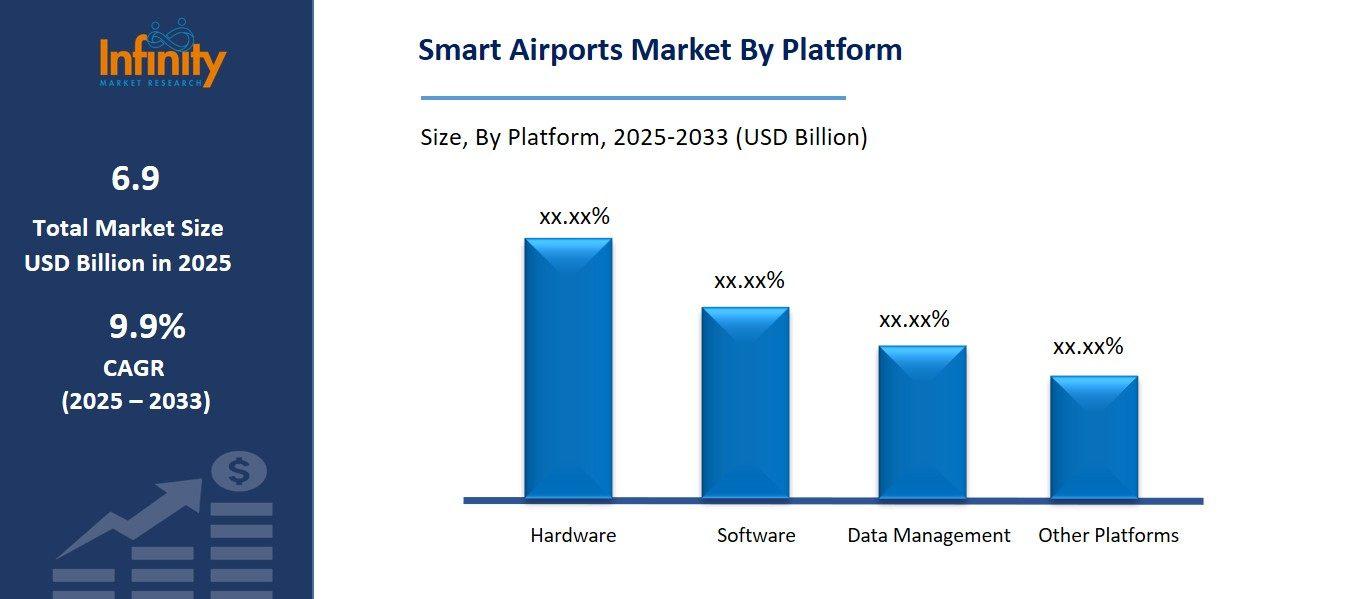
🔐 Secure Payment Guaranteed
Safe checkout with trusted global payment methods.
🌟 Why Choose Infinity Market Research?
At Infinity Market Research, we dont just deliver data — we deliver clarity, confidence, and competitive edge.
In a world driven by insights, we help businesses unlock the infinite potential of informed decisions.
Here why global brands, startups, and decision-makers choose us:
Industry-Centric Expertise
With deep domain knowledge across sectors — from healthcare and technology to manufacturing and consumer goods — our team delivers insights that matter.
Custom Research, Not Cookie-Cutter Reports
Every business is unique, and so are its challenges. Thats why we tailor our research to your specific goals, offering solutions that are actionable, relevant, and reliable.
Data You Can Trust
Our research methodology is rigorous, transparent, and validated at every step. We believe in delivering not just numbers, but numbers that drive real impact.
Client-Centric Approach
Your success is our priority. From first contact to final delivery, our team is responsive, collaborative, and committed to your goals — because you re more than a client; you re a partner.
Recent Reports
Global Myopia Control Lenses Market Report 2025-33
Hyaluronic Acid-based Dermal Fillers Market Report
Smart Airports Market
Global Smart Airports Market Global Industry Analysis and Forecast (2025-2033) by Type (Airport 2.0, Airport 3.0, and Airport 4.0), Platform (Hardware, Software, Data Management and Other Platforms), Application (AI/Machine Learning, Data Visualization, Anomaly Detection, Cyber Security, Asset/Resource Management, and Other Applications) and Region
Aug 2025
Information and Communication Technology
Pages: 138
ID: IMR2159
Smart Airports Market Synopsis
The Global Smart Airports Market was valued at USD 6.3 billion in 2024 and is expected to grow from USD 6.9 billion in 2025 to USD 13.9 billion by 2033, reflecting a CAGR of 9.9% over the forecast period.
Smart airports market is also experiencing a growing trend as airports are increasingly implementing high-tech components in order to optimize the airports, create a better-experience to passengers, and also provide a safe environment. The relevant innovations coffee smart airports are based on include artificial intelligence, the Internet of Things (IoT), big data, and biometric systems, which allow lightweight travel with automated check-in, real-time information about flights, intelligent baggage transport, and predictable maintenance services inside the airport. This trend has been compounded by the increase in demand of contactless services especially following the pandemic which has increased the implementation of digital systems within terminals.

Smart Airports Market Driver Analysis
Demand for Seamless Passenger Experience
The new generation travelers are turning out to be tech-savvy and personally like convenience, speed, and personalization in their travel. This consequently leads to heightened demand behind rapid, touch-less and personalized services along the airport experience. Smart airports fulfill this need by incorporating high-end digital technologies in the form of biometric verification, mobile check-ins, flight update information, and automated assistance through AI. The innovations will allow passengers to travel without too much physical contact or long delays on security, boarding and baggage claim.
Smart Airports Market Restraint Analysis
Cybersecurity and Data Privacy Concerns
With the increasing digitalization of airports and the integration of such advanced technologies as the Internet of Things, cloud computing, and artificial intelligence-based systems, the latter takes in large volumes of data, especially on passengers, flight paths and operations, and security precautions. Greater connectivity, which is all instrumental in building a smooth and seamless travel experience, puts airports at more significant risks of cybersecurity. It is possible that cybercriminals might attack such systems with an aim to steal personal data, interfere with services availability, or breach operational safety.
Smart Airports Market Opportunity Analysis
Expansion of Contactless and Biometric Technologies
The COVID-19 pandemic has dramatically altered the passenger expectations bringing a high demand of contact-free and sanitary travel experiences. Such transition has fast tracked the use of systems such as facial recognition, cell phone boarding passes, and airport self-service podiums. Facial recognition introduced will enable travelers to move through security, immigration, and boarding points without significant physical touch reducing the risk and maximizing the security level and efficiency. Services related to checking in and real-time updates are available through the mobile gadget, and passengers can look up on the boarding information directly using their smartphones, thus, eliminating human contact or common touchpoints.
Smart Airports Market Trend Analysis
Cloud-Based Airport Management Systems
Cloud platforms are also becoming critical in the modernization of airport operations because they present centralized administration, better scalability, and remote accessibility. Airports using cloud-based systems are able to combine and control distinct operations that include flight scheduling, handling baggage, passengers, as well as maintenance to a single digital platform. Such centralization enhances liaisons between departments, minimizes system silos as well as facilitates quicker decision- making. Moreover, cloud services are scalable, and airports can scale their digital infrastructure with two clicks, according to traffic pressure or any other operation’s needs, without making substantial hardware investments.
Smart Airports Market Segment Analysis
The Smart Airports Market is segmented on the basis of Type, Platform, and Application.
By Type
o Airport 2.0
o Airport 3.0
o Airport 4.0
By Platform
o Hardware
o Software
o Data Management
o Other Platforms
By Application
o AI/Machine Learning
o Data Visualization
o Anomaly Detection
o Asset/Resource Management
o Other Applications
By Region
o North America (U.S., Canada, Mexico)
o Eastern Europe (Bulgaria, The Czech Republic, Hungary, Poland, Romania, Rest of Eastern Europe)
o Western Europe (Germany, UK, France, Netherlands, Italy, Russia, Spain, Rest of Western Europe)
o Asia Pacific (China, India, Japan, South Korea, Malaysia, Thailand, Vietnam, The Philippines, Australia, New-Zealand, Rest of APAC)
o Middle East & Africa (Turkey, Bahrain, Kuwait, Saudi Arabia, Qatar, UAE, Israel, South Africa)
o South America (Brazil, Argentina, Rest of SA)
By Type, Airport 3.0 Segment is Expected to Dominate the Market During the Forecast Period
The types discussed in this research study, the airport 3.0 segment is expected to account for the largest market share of smart airports market in the forecast period. The version 3.0 of the airport portrays how airports have been transformed into an intelligent, interconnected ecosystem that is more than simple automation. Some of the technologies used in these airports include use of artificial intelligence, big data analytics, Internet of Things and cloud computing to streamline their operations, improve use of their resources and offer smooth journey to the travellers.
By Platform, the Hardware Segment is Expected to Held the Largest Share
The hardware segment is likely to dominate the market on account of the critical role physical infrastructure plays in enabling smart airport functionalities. The database and infrastructure of smart airport functioning lie in the hardware elements that include sensors, biometrics, surveillance cameras and kiosks, access control, and communication tools. Such gadgets are the fundamentals of identifying real-time reporting, automation, security and effective operational aspects in diverse airport operations.

By Application, the AI Machine Learning Segment is Expected to Held the Largest Share
By Application, the AI/Machine Learning segment is expected to hold the largest share of the smart airports market as airports increasingly rely on intelligent technologies to optimize operations, enhance security, and improve passenger experience. Predictive maintenance, analysis of passenger flow, smart security screening, and automated decision-making are some of the areas that are being extensively embraced through AI, and machine learning. These technologies can capture and compute a significant amount of data to run in real-time to improve forecasting of events, efficient management of resources, and minimized operational interruptions by airports.
Smart Airports Market Regional Insights
North America is Expected to Dominate the Market Over the Forecast period
North America is expected to dominate the smart airports market over the forecast period due to its advanced aviation infrastructure, early adoption of cutting-edge technologies, and significant investments in airport modernization. The area boasts some of the busiest and most advanced airports in the world, which are constantly evolving to be more efficient, safer and offer a better experience to the passengers. The high degree of digital transformation support by governments, high degree of air traveling demand, and existence of most productive providers of technology add to the domination of North America in this market. Besides, the focus on sustainable operations, contactless services, and cybersecurity interest also promotes the rapid implementation of smart airport solutions in the region.
Recent Development
In April 2024, Honeywell has introduced the development of Surface Alert (SURF-A), a software technology designed to help prevent runway incursions. This system is intended to support pilots by delivering both audio and visual alerts, enhancing safety awareness and decision-making during runway operations.
In March 2024, Amadeus announced its acquisition of Voxel, a provider of B2B payment and electronic invoicing solutions for hotels, travel agencies, and other travel industry stakeholders. This strategic move is expected to enhance the efficiency of payment processes across the air travel ecosystem, offering streamlined and integrated financial operations for all involved parties.
Active Key Players in the Smart Airports Market
o SITA
o Siemens AG
o IBM Corporation
o Amadeus IT Group
o Huawei Technologies Co., Ltd.
o Cisco Systems, Inc.
o Honeywell International Inc.
o Indra Sistemas, S.A.
o L3Harris Technologies, Inc.
o Other Key Players
Global Smart Airports Market Scope
|
Global Smart Airports Market | |||
|
Base Year: |
2025 |
Forecast Period: |
2025-2033 |
|
Historical Data: |
2017 to 2024 |
Market Size in 2024: |
USD 6.3 Billion |
|
Market Size in 2025: |
USD 6.9 Billion | ||
|
Forecast Period 2025-33 CAGR: |
9.9% |
Market Size in 2033: |
USD 13.9 Billion |
|
Segments Covered: |
By Type |
· Airport 2.0 · Airport 3.0 · Airport 4.0 | |
|
By Platform |
· Hardware · Software · Data Management · Other Platforms | ||
|
By Application |
· AI/Machine Learning · Data Visualization · Anomaly Detection · Cyber Security · Asset/Resource Management · Other Applications | ||
|
By Region |
· North America (U.S., Canada, Mexico) · Eastern Europe (Bulgaria, The Czech Republic, Hungary, Poland, Romania, Rest of Eastern Europe) · Western Europe (Germany, UK, France, Netherlands, Italy, Russia, Spain, Rest of Western Europe) · Asia Pacific (China, India, Japan, South Korea, Malaysia, Thailand, Vietnam, The Philippines, Australia, New-Zealand, Rest of APAC) · Middle East & Africa (Turkey, Bahrain, Kuwait, Saudi Arabia, Qatar, UAE, Israel, South Africa) · South America (Brazil, Argentina, Rest of SA) | ||
|
Key Market Drivers: |
· Demand for Seamless Passenger Experience | ||
|
Key Market Restraints: |
· Cybersecurity and Data Privacy Concerns | ||
|
Key Opportunities: |
· Expansion of Contactless and Biometric Technologies | ||
|
Companies Covered in the report: |
· Century Aluminum Company, Alcoa Corporation, Kaiser Aluminum, National Aluminum Extrusion LLC. and Other Key Players. | ||
📘 Frequently Asked Questions
1. What would be the forecast period in the Smart Airports Market Research report?
Answer: The forecast period in the Smart Airports Market Research report is 2025-2033.
2. Who are the key players in the Smart Airports Market?
Answer: Century Aluminum Company, Alcoa Corporation, Kaiser Aluminum, and National Aluminum Extrusion LLC. and Other Key Players.
3. What are the segments of the Smart Airports Market?
Answer: The Smart Airports Market is segmented into Type, Platform, Application, and Regions. By Type, the market is categorized into Airport 2.0, Airport 3.0, and Airport 4.0. By Platform, the market is categorized into Hardware, Software, Data Management and Other Platforms. By Application, the market is categorized into AI/Machine Learning, Data Visualization, Anomaly Detection, Cyber Security, Asset/Resource Management, and Other Applications. By region, it is analyzed across North America (U.S.; Canada; Mexico), Eastern Europe (Bulgaria; The Czech Republic; Hungary; Poland; Romania; Rest of Eastern Europe), Western Europe (Germany; UK; France; Netherlands; Italy; Russia; Spain; Rest of Western Europe), Asia-Pacific (China; India; Japan; Southeast Asia, etc.), South America (Brazil; Argentina, etc.), Middle East & Africa (Saudi Arabia; South Africa, etc.).
4. What is the Smart Airports Market?
Answer: Smart airports market is defined as the combination of new digital and smart systems into the airport infrastructure to improve its efficiency and safety, and offer a better experience to its travelers. It is associated with automation, artificial intelligence, biometrics, Internet of Things (IoT), data analytics, and cloud computing as a way of simplifying the check-in, security, baggage handling, and air traffic control.
5. How big is the Smart Airports Market?
Answer: The Global Smart Airports Market was valued at USD 6.3 billion in 2024 and is expected to grow from USD 6.9 billion in 2025 to USD 13.9 billion by 2033, reflecting a CAGR of 9.9% over the forecast period.


🔐 Secure Payment Guaranteed
Safe checkout with trusted global payment methods.
🌟 Why Choose Infinity Market Research?
- Accurate & Verified Data:Our insights are trusted by global brands and Fortune 500 companies.
- Complete Transparency:No hidden fees, locked content, or misleading claims — ever.
- 24/7 Analyst Support:Our expert team is always available to help you make smarter decisions.
- Instant Savings:Enjoy a flat $1000 OFF on every report.
- Fast & Reliable Delivery:Get your report delivered within 5 working days, guaranteed.
- Tailored Insights:Customized research that fits your industry and specific goals.




